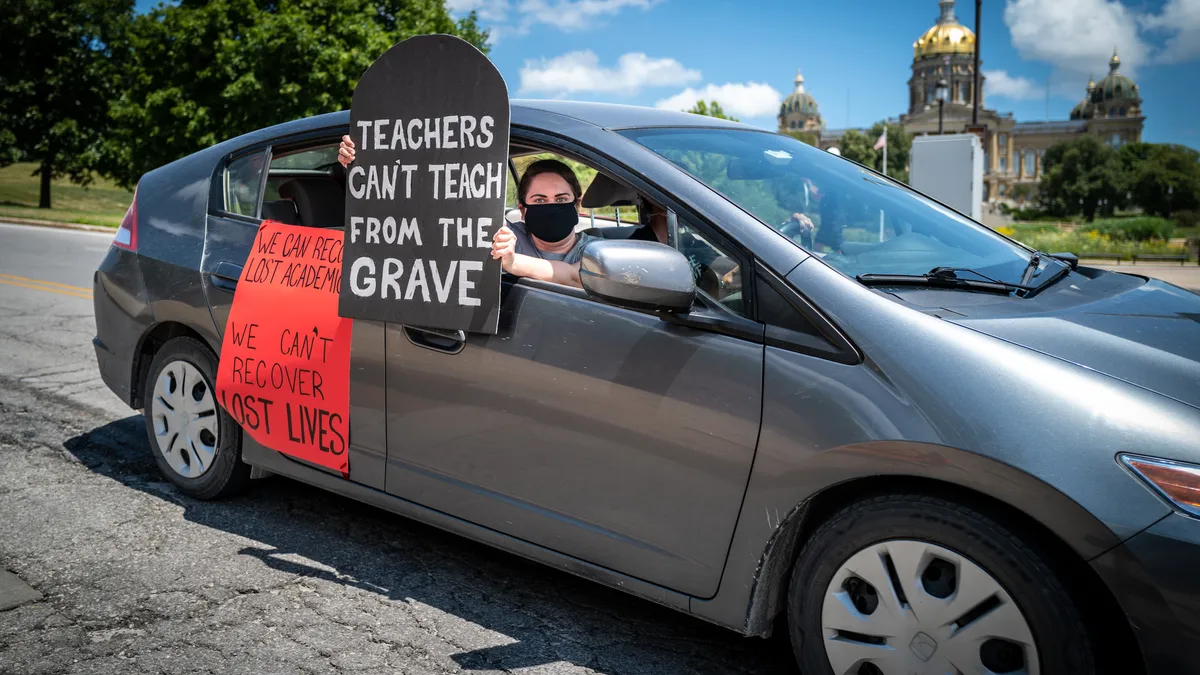Dive Brief:
-
Teacher protests and other pushback related to district and board decisions are on the rise in districts across the nation after a hiatus during COVID-19 school shutdowns.
-
In some districts, teachers and staff are staging walkouts, sickouts and strikes related to wages, benefits and contract negotiations, while others are seeing backlash from decisions related to COVID-19 health and safety policies.
-
In New York, the United Federation of Teachers joined a lawsuit against New York City, its board of education, and its housing authority on Wednesday after the city’s education department sent termination notices to more than 700 union members for not getting vaccinated.
Dive Insight:
Current protests and strikes — while not as high-profile or large-scale as those in 2018-19 during the #RedforEd movement — will still be influential, said Brad Marianno, assistant professor of educational policy and leadership at the University of Nevada, Las Vegas, in an email.
“In a tight teacher labor market (i.e., it's difficult to keep classrooms staffed right now), it's challenging for school districts to not move towards teachers' union positions in a dispute,” Marianno said. “For one, there's little public appetite for any schooling disruptions after COVID-19 related disruptions. And two, there's no one to replace teachers with.”
The protests come as district leaders deal with a nationwide teacher and substitute shortage, as well as more teachers quitting or on the brink of exiting the profession.
“And in places like New York City and Chicago, unions have a lot of sway — you can’t run a school without teachers, so the threat of a strike or a sick-out carries a lot of weight,” said Katharine Strunk, a professor of education policy at Michigan State University, in an email.
Last month in Chicago, for example, a disagreement between the city and its union on COVID-19 safety protocols led to teachers insisting on remote learning days. In the end, the district was forced to cancel four days of classes.
“It's a sign that school district business procedures are only operating in crisis instead of collaboration,” Marianno said of strikes. “Teachers' unions and school districts that are not able to keep schools open for students are bad examples of how labor relations should be done.”
Strikes that have resurfaced recently are related to local issues, such as pandemic protocols and how federal aid is used. Meanwhile, districts are facing pressure from additional stakeholders like politicians, lawmakers, and other community members.
“School districts are also trying to balance the instructional needs of the students with the demands of parents in these decisions and are often finding themselves in a very difficult spot in these negotiations,” Marianno said








 Dive Awards
Dive Awards







